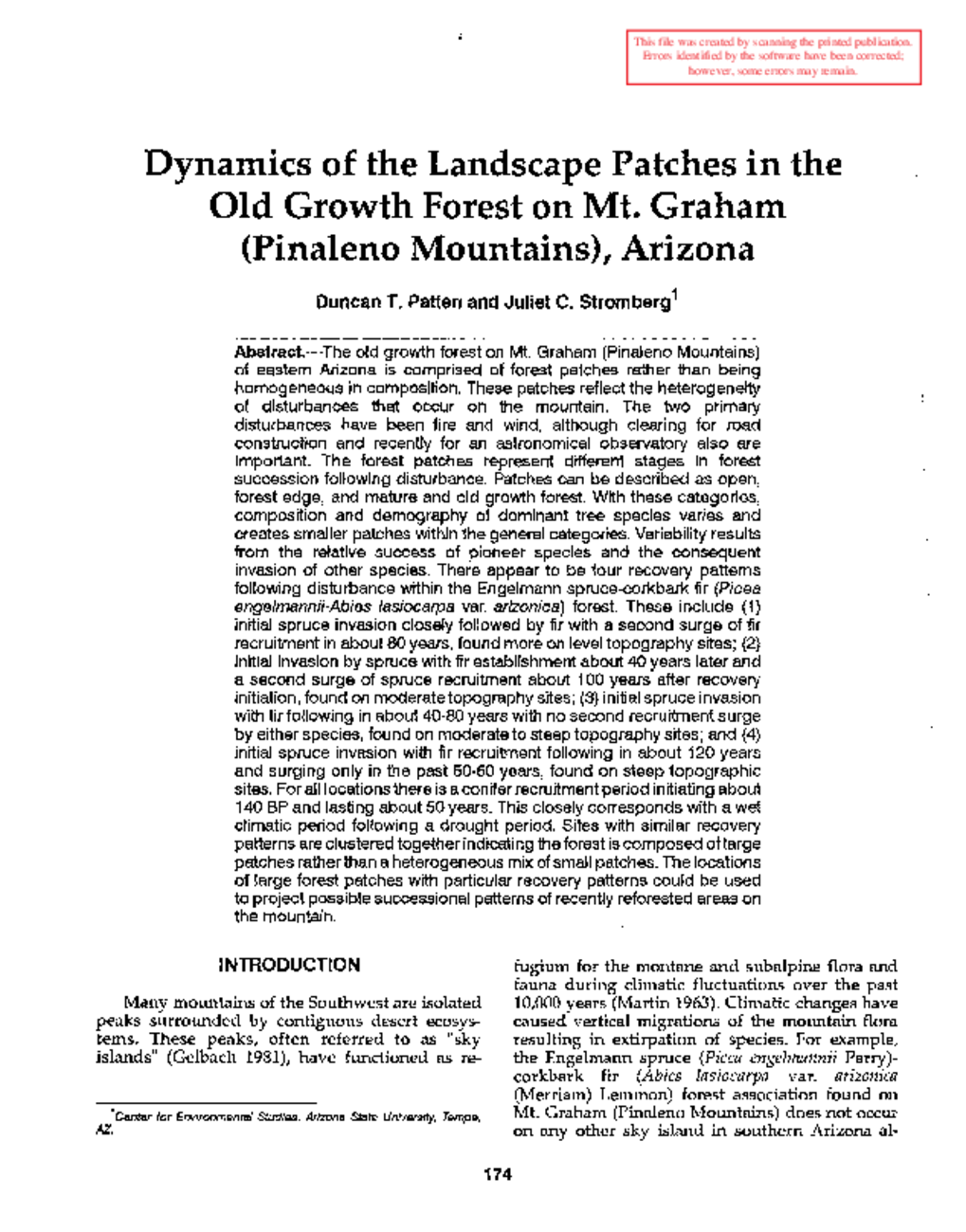Dynamics of the Landscape Patches in the Old Growth Forest on Mt. Graham (Pinaleno Mountains), Arizona
The old growth forest on Mt. Graham (Pinaleno Mountains) of eastern Arizona is comprised of forest patches rather than being homogeneous in composition. These patches reflect the heterogeneity of disturbances that occur on the mountain. The two primary disturbances have been fire and wind, although clearing for road construction and recently for an astronomical observatory also are important. The forest patches represent different stages in forest succession following disturbance. Patches can be described as open, forest edge, and mature and old growth forest. With these categories, composition and demography of dominant tree species varies and creates smaller patches within the general categories. Variability results from the relative success of pioneer species and the consequent invasion of other species. There appear to be four recovery patterns following disturbance within the Engelmann spruce-corkbark fir (Picea engelmannii-Abies lasiocarpa var. arizonica) forest. These include (1) initial spruce invasion closely followed by fir with a second surge of fir recruitment in about 80 years, found more on level topography sites; (2) initial invasion by spruce with fir establishment about 40 years later and a second surge of spruce recruitment about 100 years after recovery initiation, found on moderate topography sites; (3) initial spruce invasion with fir following in about 40-80 years with no second recruitment surge by either species, found on moderate to steep topography sites; and (4) initial spruce invasion with fir recruitment following in about 120 years and surging only in the past 50-60 years, found on steep topographic sites. For all locations there is a conifer recruitment period initiating about 140 BP and lasting about 50 years. This closely corresponds with a wet climatic period following a drought period. Sites with similar recovery patterns are clustered together indicating the forest is composed of large patches rather than a heterogeneous mix of small patches. The locations of large forest patches with particular recovery patterns could be used to project possible successional patterns of recently reforested areas on the mountain.

